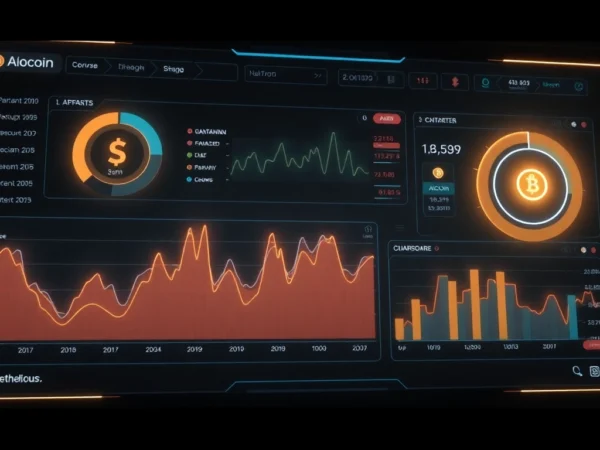Maximizing Returns in the UK Property Investment Market: Strategies for 2025
Understanding the Dynamics of the UK Property Investment Market in 2025
Recent Trends and Market Sentiment
The UK property investment market continues to evolve rapidly, fueled by a blend of economic, political, and social factors. Despite a period of uncertainty owing to Brexit adjustments and fluctuating economic indicators, recent data suggests a resilient market showing signs of sustained activity. Mortgage approvals have increased notably, especially as lenders respond to expectations of rate cuts, indicating a cautious optimism among investors and homebuyers.
According to the latest figures, mortgage approvals rose amid hopes that interest rates might decline further, sparking renewed interest in property investments. This trend is reflected in the rising number of residential transactions—up by approximately 4% in July—highlighting investor confidence in the sector’s long-term prospects.
For more insights, visit our detailed analysis of the Property Investment Market.
Impact of Economic Factors on Property Prices
Several macroeconomic variables are shaping the property landscape in 2025. Notably, the UK’s housing shortage remains dire, as reported by RICS, which contributes to a consistent upward pressure on prices. The shortage is deemed ‘dire,’ and it has been a key catalyst for the 7.7% annual increase in property prices observed in September, adding approximately £16,000 to the average home’s cost compared to the previous year.
Additionally, illicit funding has modified the market dynamics by injecting nearly £3,000 per property in illicit funds nationwide, with London’s prices seeing an even larger spike. This black money inflow not only distorts true market valuations but also makes affordability increasingly challenging for everyday homebuyers.
Meanwhile, the broader economic environment, including inflation rates, wage growth, and interest rates, influences buyers’ borrowing capacity, affecting property valuations and investment yields. A declining effective interest rate—currently at around 4.28%—has made borrowing more affordable, encouraging investment activity.
Key Challenges Facing Investors Today
Navigating today’s property market requires addressing significant hurdles. The withdrawal of some lenders from sub-4% mortgage offerings has reduced borrowing options, limiting investor flexibility. The decline in mortgage product choices from 6,842 to lower levels reflects tightening lending criteria, which can exclude weaker applicants or those with complex financial situations.
Moreover, new taxes and proposed regulatory reforms pose additional risks. Reports have indicated potential property tax hikes, which could further suppress investment returns if passed into legislation. The recent failure to extend stamp duty relief has also dampened enthusiasm among some homebuyers, although it has not halted activity altogether.
Rejection rates for mortgage applications remain high, with around 34% of rejected borrowers not being directed to alternative specialist lending options—a missed opportunity for investors and borrowers alike. Short-term deals, while attractive for quick returns, often come with higher interest costs and renewal risks, which necessitate thorough due diligence to mitigate losses.
Evaluating Investment Opportunities in the UK
Regional Hotspots and Emerging Markets
Certain regions exhibit compelling growth potentials driven by demographic shifts, infrastructural development, or economic revitalization. Cities like Manchester, Leeds, and Birmingham continue to be frontrunners, supported by robust rental markets and infrastructural improvements. Additionally, emerging regional centers—such as Sheffield and Nottingham—are gaining traction due to affordable entry prices and higher yields.
Investors should analyze regional data, including transaction volumes, price trends, and rental yields, to identify opportunities with maximum upside. Monitoring government policies and infrastructure projects, like transportation links and university expansions, can provide early signals for future growth hotspots.
Residential vs Commercial Property Pros and Cons
Deciding between residential and commercial property involves weighing various factors. Residential properties generally offer more liquidity and lower entry costs, appealing to buy-to-let investors seeking steady rental income. Conversely, commercial assets can provide higher yields and longer lease terms but often entail higher volatility and leasing complexities.
For example, industrial and office spaces are seeing a resurgence as remote working trends stabilize, but retail remains challenged due to shifting consumer habits. A diversified approach combining both asset types can mitigate risks and enhance long-term returns.
Assessing Long-term Growth Potential
Long-term prospects rely heavily on demographic trends, economic stability, and government policies. The projected 3% rise in average house prices in 2025 suggests steady appreciation, particularly if housing shortages persist. Investors should evaluate local employment rates, population growth, and infrastructure plans to gauge sustainability.
Strategic foresight involves considering areas undergoing regeneration or benefiting from technological hubs. Balancing income from rentals with potential capital growth enables building resilient portfolios capable of weathering market fluctuations.
Financing Strategies and Mortgage Options
Best Investment Mortgage Rates and How to Secure Them
Securing favorable mortgage rates is pivotal for maximizing investment profitability. Currently, the effective interest rate on new mortgages has fallen for five consecutive months to about 4.28%, creating opportunities for savvy investors. To lock in the best rates, investors should consider multiple strategies:
- Pre-approval processes to understand borrowing capacity and negotiate better terms.
- Choosing mortgage products with fixed rates—especially two or five-year terms—offering rate stability amid market volatility.
- Engaging with reputable brokers who can access exclusive deals and advise on lender criteria.
A well-negotiated mortgage can save investors significant sums over the loan tenure, improving overall returns.
Understanding Fixed vs Variable Rate Mortgages
Fixed-rate mortgages provide price certainty, shielding investors from interest rate hikes, which is beneficial in an environment where rates are historically low but expected to rise later. Variable or tracker mortgages, on the other hand, usually offer lower initial rates and the possibility of savings if rates decline or remain steady.
The choice depends on market forecasts and personal risk tolerance. Currently, with rate cuts anticipated, some investors might opt for variable deals to benefit from potential future decreases, while conservative investors prefer the security of fixed rates.
Leveraging Short-term and Remortgage Deals
Short-term deals, such as 2-year fixed mortgages, offer flexibility and can be advantageous during periods of economic uncertainty. Moreover, remortgaging—especially as remortgage completions surge—enables investors to lock in lower rates or access equity for new acquisitions.
Strategies include:
- Timing remortgages to capitalize on falling interest rates before expiry.
- Utilizing short-term deals for quick flips or bridging finance in opportunistic investments.
However, investors must account for potential exit fees and market shifts that could impact refinancing options.
Legal, Tax, and Regulatory Considerations
Recent Tax Reforms Affecting Property Investment
The UK government has introduced several reforms that influence the property investment landscape. Proposed property taxes and potential hikes aim to curb speculation but also pose challenges for investors, particularly in high-value markets. Recent discussions signal possible increases in stamp duty and other levies, which could reduce net yields.
Despite these hurdles, strategic tax planning remains vital. Investors should explore opportunities such as capital allowances, mortgage interest relief (where applicable), and structuring investments through tax-efficient vehicles like Limited Companies to optimize returns.
Legal Compliance and Due Diligence
Ensuring legal compliance involves rigorous due diligence on properties and tenants. Rejected applicants for mortgages often are not referred to specialist lenders, emphasizing the importance of understanding eligibility criteria early. Investors must verify planning permissions, leasehold details, and tenancy agreements to mitigate legal risks.
Engaging legal professionals early helps ensure adherence to regulations, reduces the risk of purchases falling through, and safeguards long-term investment performance.
Maximizing Tax Benefits and Incentives
Tax advantages remain a cornerstone of profitable property investment. Recent measures, such as the phased removal of mortgage interest tax relief for individual landlords, make tax planning more complex but not impossible. Utilizing allowances like property depreciation, establishing rental income obligations, and leveraging relief programs can enhance profitability.
Staying informed about legislative updates and consulting tax specialists ensures that investors capture every possible benefit while complying with regulations.
Future Outlook and Strategic Investment Planning
Predictions for Property Price Movements in 2025
Based on current data, property prices are forecasted to increase by approximately 3% in 2025, driven mainly by supply constraints, rising construction costs, and sustained demand. Although regional disparities exist, overarching trends indicate gradual appreciation with occasional corrections in over-saturated markets.
Investors should prepare for moderate growth rather than rapid escalations, aligning expectations with realistic performance metrics.
Strategies for Mitigating Market Risks
Mitigation involves diversification across regions and asset types, maintaining liquidity to capitalize on downturns, and adopting flexible financing arrangements. Hedging against inflation and integrating long-term tenant agreements can preserve income streams amidst economic shocks. Keeping abreast of political developments, tax reforms, and market sentiment is equally essential.
Employing scenario analysis and stress testing portfolios against market shocks helps in structuring resilient investment plans.
Building a Diversified Property Portfolio for Long-term Success
Diversification reduces exposure to localized downturns and sector-specific risks. Combining residential units in growth regions with commercial properties or student accommodation can optimize yield and stability. Furthermore, blending buy-to-let investments with development projects or joint ventures enhances strategic capacity.
Strategic portfolio expansion should be supplemented with ongoing performance reviews and adjustment of investment allocations based on market signals and personal risk appetite.










